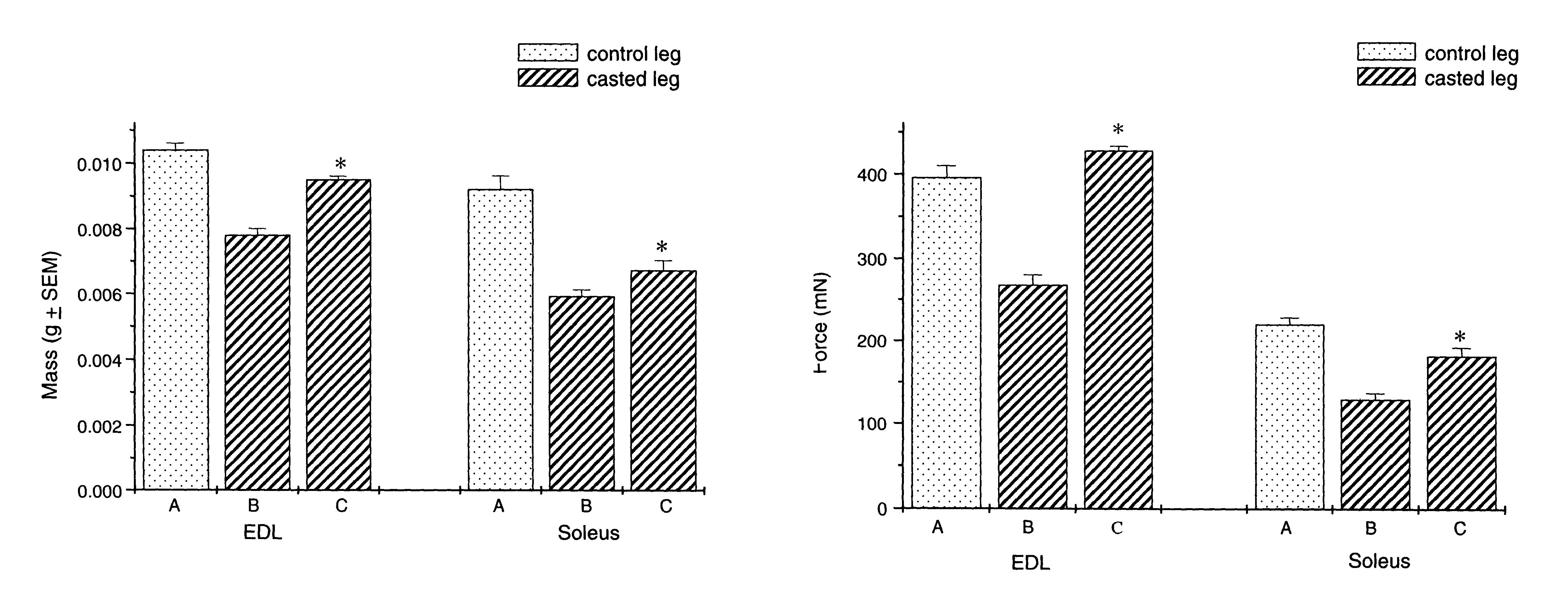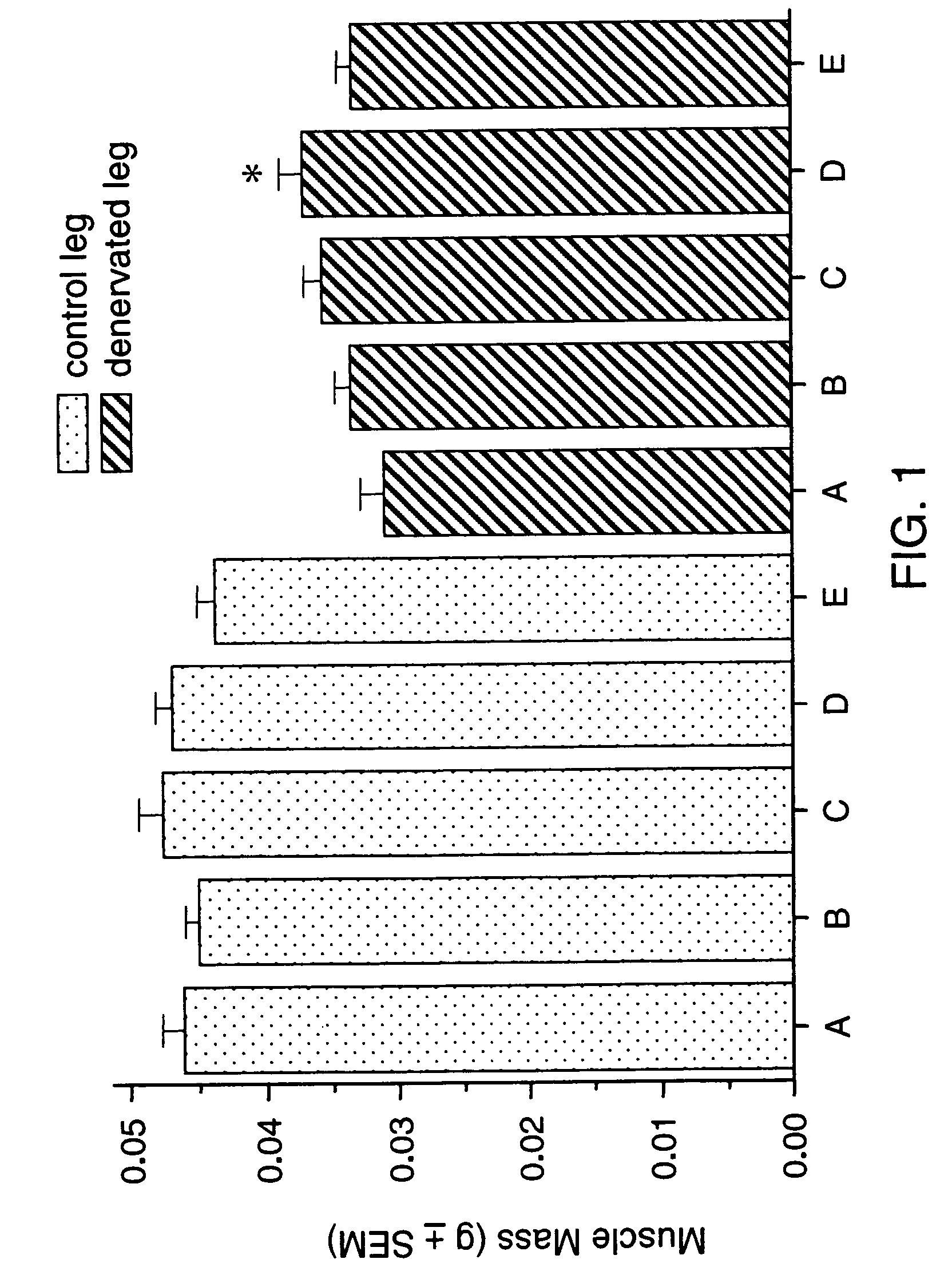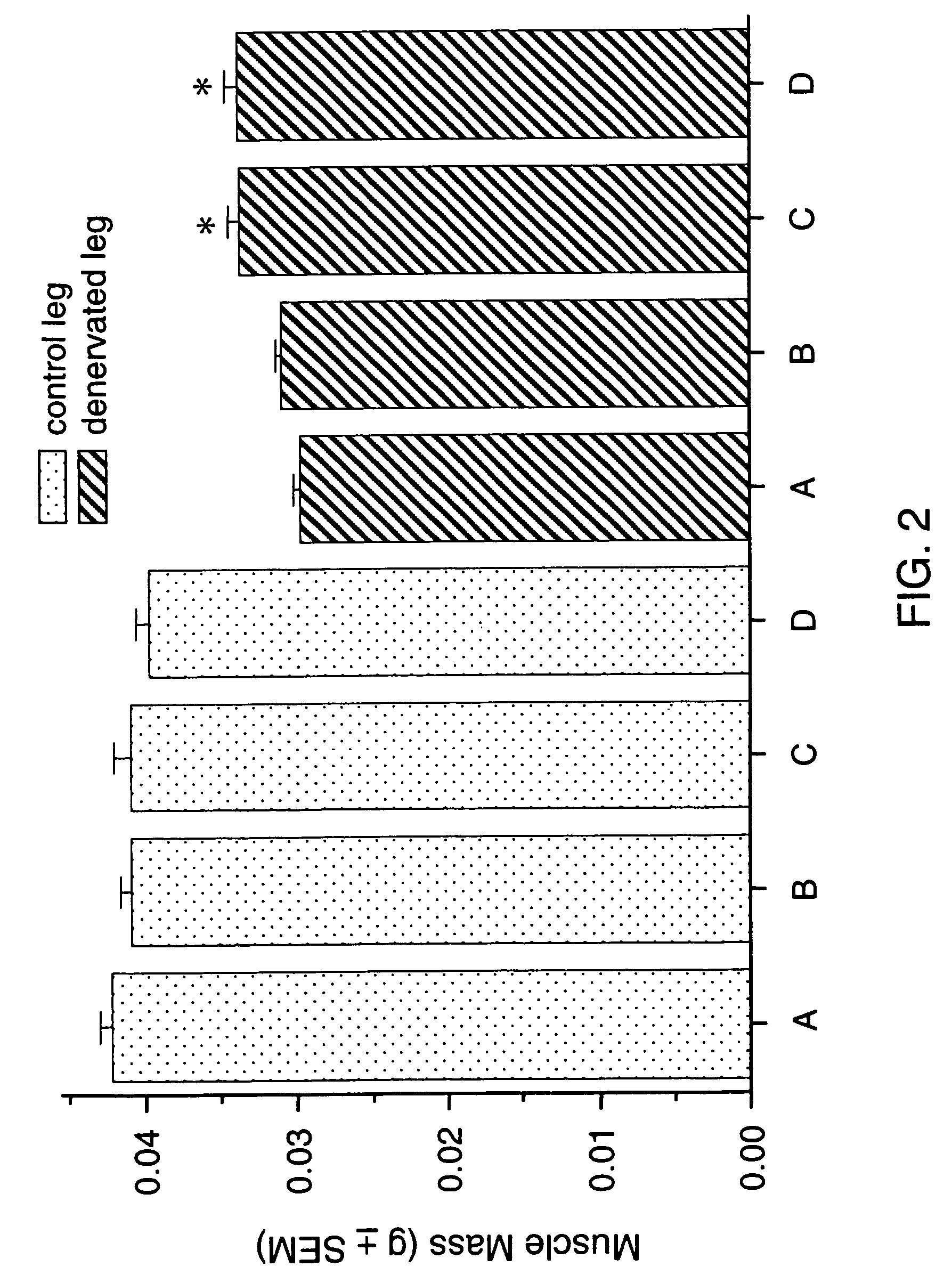Methods for identifying compounds for regulating muscle mass or function using corticotropin releasing factor receptors
a technology of corticotropin and releasing factor, which is applied in the direction of immunoglobulins, peptides, drugs against animals/humans, etc., can solve the problems of acute skeletal muscle atrophy, limited rehabilitation of patients from immobilization, and debilitating muscle atrophy, and achieve the effect of inducing skeletal muscle hypertrophy
- Summary
- Abstract
- Description
- Claims
- Application Information
AI Technical Summary
Benefits of technology
Problems solved by technology
Method used
Image
Examples
example 1
Construction of Vectors for Human CRF2R Receptor Expression
[0142]The human CRF2R (hCRF2R) DNA sequence, Accession No. E12752, is retrieved and two oligonucleotides including one containing the 5′ end of the gene beginning at the initiation codon (5′ oligonucleotide) and one containing the 3′ end of the gene containing the stop codon (3′ oligonucleotide) are synthesized. These oligonucleotides are designed to contain restriction endonuclease sites which are not present in the hCRF2R gene with one unique site in the 5′ oligonucleotide and a different unique restriction endonuclease site in the 3′ oligonucleotide In addition, the 3′ oligonucleotide contains a polyadenylation addition signal sequence. Double stranded cDNA from human skeletal muscle is purchased from the Universal QUICK-Clone cDNA collection (Clonetech Inc., Palo Alto, Calif., USA). Using the above 5′ and 3′ oligonucleotides, the hCRF2R cDNA is amplified by PCR of the human skeletal muscle cDNA using the AdvanTaq PCR kit...
example 2
Receptor Binding Assays
[0144]Receptor binding analysis of compounds is performed in whole cells by plating the HEK293 / CRE-LUC / pIRESneo / hCRF2R cells from Example 1 in a 96 well polylysine coated plate. Cells are seeded in DMEM medium containing 10% fetal bovine serum, penicillin / streptomycin solution, L-glutamine, and non-essential amino acid at 37° C. in a 5% carbon dioxide / 95% air atmosphere and incubated overnight. The culture medium is removed and the appropriate amount of CRF covalently labeled with Europium (Eu-CRF) in MEM (Life Technologies, Rockville, Md.)+10% Seablock (Clonetech Inc., Palo Alto, Calif., USA) is added. The cells are incubated with the Eu-CRF for 90 minutes at room temperature then washed 4 times with phosphate buffered saline lacking magnesium and calcium (Life Technologies, Rockville, Md.). Following the final wash, enhancement solution is added (Wallac Inc., Gaithersburg, Md.) and the plate is read on a Wallac plate reader (Wallac Inc., Gaithersburg, Md.) ...
example 3
[0145]Receptor activation analysis is performed by seeding the HEK293 / CRE-LUC / pIRESneo / hCRF2R cells of Example 1 into Packard View Plate-96™ (Packard Inc., CA). Cells are seeded in DMEM medium containing 10% fetal bovine serum, penicillin / streptomycin solution, L-glutamine, and non-essential amino acid at 37° C. in a 5% carbon dioxide / 95% air atmosphere and incubated overnight. The medium is then removed and replaced with DMEM (Life Technologies, Rockville, Md.) containing 0.01% bovine albumin fraction V (SIGMA, St. Louis, Mo.) containing the compound of interest. The cells are then incubated for four hours at 37° C. in a 5% carbon dioxide / 95% air atmosphere after which the medium is removed and the cells are washed twice with Hanks Balanced Salt Solution (Life Technologies, Rockville, Md.). Lysis Reagent (Promega Inc., Madison, Wis.) is then added to the washed cells and the cells are incubated for 20 minutes at 37° C. in a 5% carbon dioxide / 95% air atmosph...
PUM
| Property | Measurement | Unit |
|---|---|---|
| Acidity | aaaaa | aaaaa |
| Concentration | aaaaa | aaaaa |
| Concentration | aaaaa | aaaaa |
Abstract
Description
Claims
Application Information
 Login to View More
Login to View More - R&D
- Intellectual Property
- Life Sciences
- Materials
- Tech Scout
- Unparalleled Data Quality
- Higher Quality Content
- 60% Fewer Hallucinations
Browse by: Latest US Patents, China's latest patents, Technical Efficacy Thesaurus, Application Domain, Technology Topic, Popular Technical Reports.
© 2025 PatSnap. All rights reserved.Legal|Privacy policy|Modern Slavery Act Transparency Statement|Sitemap|About US| Contact US: help@patsnap.com



